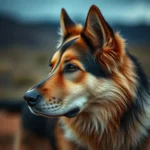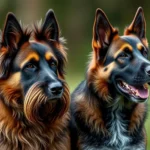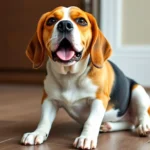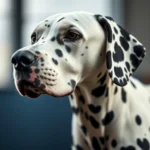
Introduction
Dog breeds are classifications that group dogs based on shared characteristics, including appearance, behavior, and purpose. Understanding dog breeds is crucial for anyone considering dog ownership, as it helps potential owners match their lifestyle to the right canine companion.
Among the fascinating mixes in the canine world is the Miniature Schnoxie, a delightful hybrid breed that combines the best traits of the Miniature Schnauzer and the Dachshund. This charming crossbreed captures the hearts of dog lovers with its unique appearance and engaging personality.
Understanding Dog Breeds
What Are Dog Breeds?
Dog breeds are distinct groups of domestic dogs that have been selectively bred for specific traits, including size, coat type, and temperament. These classifications are primarily based on physical characteristics and behavioral tendencies, which influence how well a dog adapts to various environments and lifestyles.
Understanding the characteristics of different breeds is essential for responsible dog ownership. It helps prospective dog owners make informed decisions about which breed will best fit their household, lifestyle, and preferences.
Hybrid vs. Purebred
Hybrid breeds, like the Miniature Schnoxie, arise from the intentional crossbreeding of two purebred dogs. This practice aims to combine desirable traits from both parent breeds while potentially minimizing some breed-specific health issues.
In contrast, purebred dogs are those that have been bred consistently within a specific breed standard over generations. While purebreds can exhibit predictable traits, hybrids often present a wider range of characteristics.
The pros of owning a hybrid dog include increased genetic diversity, which can lead to better overall health. However, potential challenges include unpredictability in temperament and appearance, as each hybrid dog may inherit traits from either parent.
Miniature Schnoxie Overview
Breed History and Origin
The Miniature Schnoxie is a mix between the Miniature Schnauzer and the Dachshund, both of which have rich histories. The Miniature Schnauzer, originating in Germany, was bred as a ratting dog on farms, known for its intelligence and energetic nature. Meanwhile, the Dachshund, with its distinct long body and short legs, was developed in Germany for hunting badgers.
The combination of these two breeds has resulted in the Miniature Schnoxie, known for its affectionate nature and playful demeanor. This hybrid has gained popularity as a companion dog, appealing to families and individuals alike.
Physical Characteristics
The Miniature Schnoxie typically stands between 10 to 15 inches in height and weighs around 10 to 20 pounds. Their small size makes them an excellent choice for various living situations, from apartments to larger homes.
When it comes to coat types, Miniature Schnoxies can inherit a variety of textures and colors from their parent breeds. They may boast a wiry coat reminiscent of the Schnauzer or the smooth, silky fur of the Dachshund. Common colors include black, brown, tan, and combinations of these.
Distinctive features include long, floppy ears, a short tail, and an expressive face that often captures the essence of both breeds.
Temperament and Behavior
The Miniature Schnoxie is known for its lively and friendly personality. Typically, they are affectionate and loyal companions, often forming strong bonds with their families. Their playful nature makes them particularly good with children, as they enjoy interactive play and are generally tolerant of younger family members.
Socialization is crucial for these dogs, as they can inherit the Schnauzer’s protective instincts. Early exposure to various people, environments, and other pets can help them develop into well-rounded adults.
Care Requirements for Miniature Schnoxie
Nutrition
Proper nutrition is vital for the health and well-being of your Miniature Schnoxie. A balanced diet, rich in high-quality proteins, fats, and carbohydrates, is essential. Consider feeding them a premium dog food formulated for small breeds, ensuring that it meets their specific nutritional needs.
Feeding schedules should typically consist of two meals per day, spaced evenly apart. Overfeeding can lead to obesity, which is a concern for many small breeds. Be attentive to portion sizes and adjust based on your dog’s activity level.
Exercise Needs
Despite their small stature, Miniature Schnoxies have moderate exercise needs. Daily walks, combined with playtime, help keep them physically fit and mentally stimulated. Aim for at least 30 to 60 minutes of exercise each day, adapting activities to your dog’s energy levels.
Activities like fetch, tug-of-war, and puzzle toys can provide both physical and mental stimulation, fostering a happy and healthy dog.
Grooming
Grooming is an essential aspect of caring for a Miniature Schnoxie. Depending on their coat type, they may require regular brushing to prevent matting and reduce shedding. A wiry coat may need grooming every few weeks, while smoother coats can be maintained with weekly brushing.
Dental care is equally important; regular brushing can prevent dental disease, which is common in small breeds. Additionally, nail trimming is necessary every few weeks to keep your dog’s paws healthy.
Health Considerations
Common Health Issues
Like all breeds, the Miniature Schnoxie can be prone to certain health issues. Some common conditions to watch for include hip dysplasia, patellar luxation, and certain eye disorders. Regular vet check-ups can help in early detection and management of these issues.
Preventative care, including a healthy diet, regular exercise, and routine veterinary visits, is crucial for maintaining your dog’s overall health.
Regular Veterinary Care
Routine veterinary care is essential for your Miniature Schnoxie. Regular check-ups allow your vet to monitor your dog’s health and catch potential problems early. A typical vaccination schedule should include core vaccines, such as rabies and distemper, as well as any breed-specific recommendations.
Preventative care also includes heartworm prevention and flea and tick control, ensuring that your dog remains healthy and comfortable.
Training the Miniature Schnoxie
Basic Obedience Training
Training is an integral part of raising a well-adjusted Miniature Schnoxie. Early socialization and obedience training can help them develop good manners and reduce behavioral issues. Positive reinforcement techniques, such as treats and praise, work best for these eager-to-please dogs.
Basic commands like sit, stay, and come should be introduced early on. Consistency and patience are key, as these dogs can sometimes display a stubborn streak, inherited from their Dachshund parent.
Advanced Skills and Tricks
Once your Miniature Schnoxie has mastered basic commands, you can move on to advanced skills and tricks. Activities such as agility training or trick training can provide excellent mental stimulation and strengthen your bond with your dog.
Engaging in training not only helps in keeping your dog mentally sharp but also reinforces good behavior and builds confidence.
Living with a Miniature Schnoxie
Ideal Living Conditions
Miniature Schnoxies adapt well to various living conditions. They thrive in homes with access to outdoor space but can comfortably live in apartments as long as they receive regular exercise. Their relatively small size makes them suitable for indoor living.
These dogs are social creatures and enjoy being part of family dynamics. They do best in homes where they can spend quality time with their owners and participate in family activities.
Compatibility with Other Pets
When introducing a Miniature Schnoxie to other pets, it’s essential to do so gradually. They usually get along well with other dogs and can even coexist with cats if socialized correctly. Monitor interactions initially, ensuring that your Miniature Schnoxie feels secure and comfortable.
Training and socialization play pivotal roles in fostering harmonious relationships between pets. Reinforcing positive behavior when interacting with other animals will help your Schnoxie become well-adjusted and friendly.
Conclusion
In summary, the Miniature Schnoxie is a delightful hybrid breed that brings together the best traits of the Miniature Schnauzer and Dachshund. With its charming personality, adaptability to various living conditions, and moderate exercise needs, this breed is an excellent choice for families and individuals alike.
Potential owners should consider adopting from shelters or breed rescues, providing a loving home to a dog in need. With proper care, training, and socialization, a Miniature Schnoxie can be a loving and loyal companion for many years.
FAQs
What is the lifespan of a Miniature Schnoxie?
The average lifespan of a Miniature Schnoxie typically ranges from 12 to 15 years, depending on factors such as genetics and overall health care.
Are Miniature Schnoxies good for first-time dog owners?
Yes, Miniature Schnoxies can be suitable for first-time dog owners, provided they are willing to invest time in training and socialization. Their friendly demeanor and adaptability make them excellent companions.
How much do Miniature Schnoxies typically cost?
The cost of a Miniature Schnoxie can vary widely, typically ranging from $300 to $1,500, depending on factors like breeder reputation and location.
Do Miniature Schnoxies shed a lot?
Shedding varies depending on the coat type; however, many Miniature Schnoxies shed minimally. Regular grooming can help manage any shedding and keep their coat healthy.
Can Miniature Schnoxies be left alone during the day?
While Miniature Schnoxies can tolerate some alone time, they thrive on companionship. Long periods of solitude can lead to separation anxiety, so it’s best to ensure they have company or engaging activities when you’re away.








